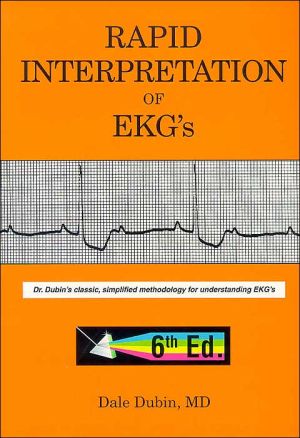Antiterrorism and Homeland Defense: Polymers and Materials
Since 9/11/2001, there has been a dramatic increase in research activity for anti-terrorism and homeland defense. Much of this research activity has been in the detection and mitigation of chemical, biological, and nuclear (CBN) materials related to explosives and weapons of mass destruction. New detection systems are necessary because current technology is not sufficient in warning of the presence of such weapons. New mitigation methods are necessary for protecting military and civilian...
Search in google:
Since 9/11/2001, there has been a dramatic increase in research activity for anti-terrorism and homeland defense. Much of this research activity has been in the detection and mitigation of chemical, biological, and nuclear (CBN) materials related to explosives and weapons of mass destruction. New detection systems are necessary because current technology is not sufficient in warning of the presence of such weapons. New mitigation methods are necessary for protecting military and civilian personnel from attack, as well as securing facilities from contamination. The key to any detection system and mitigation method is to find a way to specifically and selectively identify the target, such as a nerve agent of a biological pathogen, and then design materials to protect, deter, or decontaminate the target. New materials in the form of polymers and other types have played an important role in advancing the field. Development of new materials has led to more specific chemical detectors, such as surface acoustic wave and ion mobility devices for detection of nerve agents and explosives. Development of new materials has also lead to new breathable, fabrics for protective equipment that is resistant to chemical attack for first responders. New materials are very important in decontamination of sensitive items such as computers and office art. This symposium book presents several chapters that address the development of these new materials. The chapters include esoteric research and development on key new materials for chemical and biological detection, protective clothing, and decontamination. The development of these materials is discussed on both the fundamental and applied levels.
1. New Polymers and Materials Developed for Issues of National Security: An Overview., John G. Reynolds and Glenn E. Lawson2. Synthesis and Spectroscopic Characterization of Molecularly Imprinted Polymer Phosphonate Sensors., Glen E. Southard, K. A. Van Houten, Edward W. Ott Jr., and George M. Murray.3. Development of an Enzyme-Based Photoluminescent Porous Silicon Detector for Chemical Warfare Agents., Bradley R. Hart, Sonia E. Létant, Staci R. Kane, Masood Z. Hadi, Sharon J. Shields, T. C. Cheng, Vipin K. Rastogi, J. Del Eckels, and John G. Reynolds.4. Optical Enzyme-Based Sensors for Reagentless Detection of Chemical Analytes., Brandy Johnson-White and H. James Harmon.5. Design of Sorbent Hydrogen Bond Acidic Polycarbosilanes for Chemical Sensor Applications., Eric J. Houser, Duane L. Simonson, Jennifer L. Stepnowski, Mike R. Papontonakis, Stuart K. Ross, Stanley V. Stepnowski, Eric Snow, Keith F. Perkins, Chet Bryant, Peter LaPuma, Gary Hook and R. Andrew McGill.6. Non-Aqueous Polymer Gels with Broad Temperature Performance., Joseph L. Lenhart, Phillip J. Cole, Burcu Unal, and Ronald Hedden.7. Detection of Toxic Chemicals for Homeland Security Using Polyaniline Nanofibers., Shabnam Virji, Richard B. Kaner, and Bruce H. Weiller.8. Application of Nanoparticles in Scintillation Detectors., Suree S. Brown, Adam J. Rondinone, and Shen Dai.9. A Comparison of Insulator-Based Dielectrophoretic Devices for the Monitoring and Separation of Water-Borne Pathogens as a Function of Microfabrication Technique., Gregory J. McGraw, Michael Kanouff, Joseph T. Ceremuga, Rafael V. Davalos, Blanca H. Lapizco-Encinas, Petra Mela, Renee Shediac, John D. Brazzle, John T. Hachman, Gregory J. Fiechtner, Eric B. Cummings, Yolanda Fintschenko, Blake A. Simmons.10. Design and Synthesis of Dendritic Tethers for the Immobilization of Antibodies for the Detection of Class A Bioterror Pathogens., Charles W. Spangler, Brenda D. Spangler, E. Scott Tarter, and Zhiyong Suo.11. Amphiphilic Polymers with Potent Antibacterial Activity., M. Firat Ilker, Gregory N. Tew, E. Bryan Coughlin.12. Catalysts for Aerobic Decontamination of Chemical Warfare Agents Under Ambient Conditions., Craig L. Hill, Nelya M. Okun, Daniel A. Hillesheim, and Yurii V. Geletii.13. Ultrastable Nanocapsules from Headgroup Polymerizable Divinylbenzamide Phosphoethanolamine., Glenn E. Lawson and Alok Singh.14. Nanoencapsulation of Organophosphorus Acid Anhydrolase (OPAA) with Mesoporous Materials for Chemical Agent Decontamination in Organic Solvents., Kate K. Ong, Tu-chen Cheng, Ray Yin, Hua Dong, Jian-Min Yuan, and Yen Wei.








